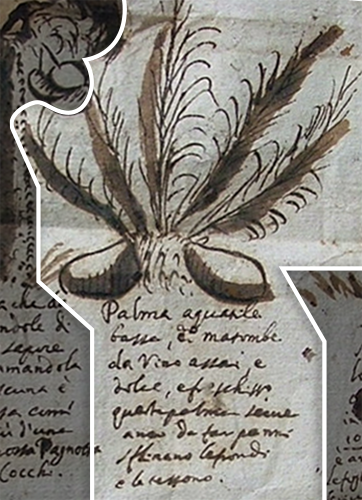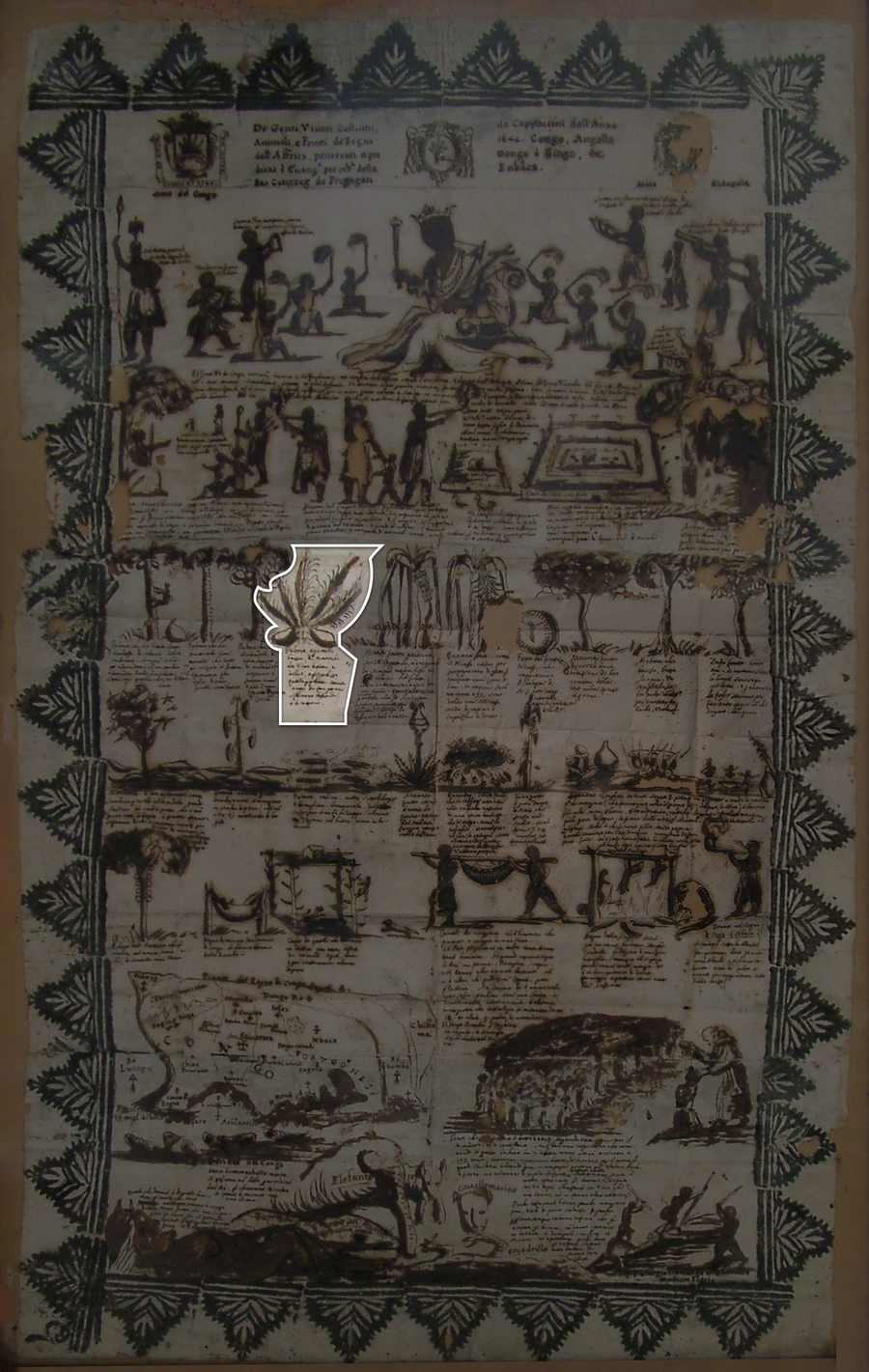Raffia [Raphia]
Palma aquatile bassa, d. [detta] matombe1 da Vino assai [sic] e dolce, e freschisso questa palma serve anco da far panno sflinano le frondi e le tessono.2
Short wet palm, called matombe makes rather [sic] and sweet, and very fresh wine. The palm also serves to make cloth. They make thread from the leaves and weave them.
- 1Matombe (also spelled matome in Cavazzi) is the raffia palm; see Cavazzi and Alamandini, Istorica descrizione, 7, 31. Also mentionned in Olfert Dapper, Naukeurige beschrijvinge der afrikaensche eylanden; als Madagaskar, of Sant Laurens, Sant Thomee, d'eilanden van Kanarien, Kaep de Verd, Malta en andere, vertoont in de benamingen, gelegentheit, steden, revieren, gewassen &c (J. Van Meurs: Amsterdam, 1668), 523, 32, 64, 72.
- 2About early modern Kongo textiles see Cécile Fromont, “Getting to Know Early Modern Western Central African Textiles: New Evidence, Old Shadows, and the Puzzle of Pineapple Fibers,” The Textile Museum Journal 48, no. 1 (2021); Gordon D. Gibson and Cecilia R. McGurk, “High-Status Caps of the Kongo and Mbundu Peoples,” The Textile Museum Journal 5, no. 4 (1977): 71-96; Jan Vansina, “Raffia Cloth in West Central Africa, 1500–1800,” in Textiles: Production, Trade and Demand, ed. Maureen Fennell Mazzaoui (Aldershot: Ashgate, 1998), 263-81. In Lopes, a depiction of the banana tree is mislabeled as “type of palms which makes silk” Duarte Lopes and Filippo Pigafetta, Relatione del reame di Congo et delle circonvicine contrade, tratta dalli scritti & ragionamenti di Odoardo Lopez, Portoghese (Rome: Appresso B. Grassi, 1591), plate 1.


Add new comment